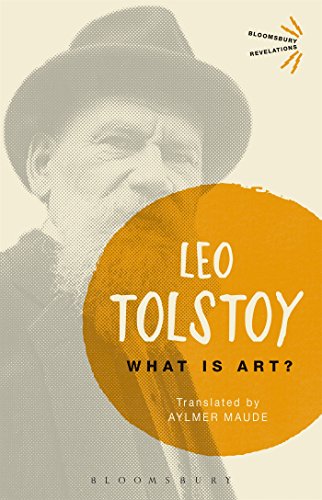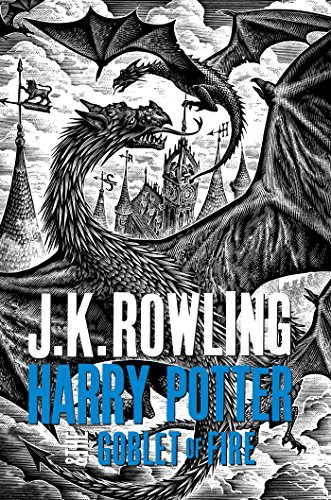-
Gone Shopping
Lorraine Gamman
Paperback (Bloomsbury Academic, Sept. 26, 2013)Shirley Pitts, the eldest of six children was born upside down on 24 November 1934. Her "career" began by thieving bread off doorsteps and coal from coalcarts. Her father's bungled attempts at blackmarketeering and her dipsomaniac mother's inadequacies made Shirley resolve not only to be a first-class thief but also the best mother her six children could wish for. Before she died Shirley told her story to Lorraine - the story of a generous, brave and beautiful woman with a huge sense of fun and a love of life.
-
Rereading Childhood Books: A Poetics
Alison Waller, Lisa Sainsbury
Hardcover (Bloomsbury Academic, Feb. 7, 2019)Childhood books play a special role in reading histories, providing touchstones for our future tastes and giving shape to our ongoing identities. Bringing the latest work in Memory Studies to bear on writers' memoirs, autobiographical accounts of reading, and interviews with readers, Rereading Childhood Books explores how adults remember, revisit, and sometimes forget, these significant books. Asking what it means to return to familiar works by well-known authors such as Lewis Carroll, C. S. Lewis and Enid Blyton, as well as popular and ephemeral material not often considered as part of the canon, Alison Waller develops a poetics of rereading and presents a new model for understanding lifelong reading. As such she reconceives the history of children's literature through the shared and individual experiences of the readers who carry these books with them throughout their lives.
-
Foreigners in Ancient Egypt: Theban Tomb Paintings from the Early Eighteenth Dynasty
Flora Brooke Anthony, Nicholas Reeves
Paperback (Bloomsbury Academic, Dec. 1, 2016)In ancient Egypt, one of the primary roles of the king was to maintain order and destroy chaos. Since the beginning of Egyptian history, images of foreigners were used as symbols of chaos and thus shown as captives being bound and trampled under the king's feet. The early 18th dynasty (1550-1372 BCE) was the height of international trade, diplomacy and Egyptian imperial expansion. During this time new images of foreigners bearing tribute became popular in the tombs of the necropolis at Thebes, the burial place of the Egyptian elite. This volume analyses the new presentation of foreigners in these tombs. Far from being chaotic, they are shown in an orderly fashion, carrying tribute that underscores the wealth and prestige of the tomb owner. This orderliness reflects the ability of the Egyptian state to impose order on foreign lands, but also crucially symbolises the tomb owner's ability to overcome the chaos of death and achieve a successful afterlife. Illustrated with colour plates and black-and-white images, this new volume is an important and original study of the significance of these images for the tomb owner and the functioning of the funerary cult.
-
What is Art?
Leo Tolstoy
Paperback (Bloomsbury Academic, Feb. 25, 2016)Leo Tolstoy is one of the most celebrated novelists of all time. As well as writing literary classics such as Anna Karenina and War and Peace he was also the author of some hugely influential critical and philosophical works. First published in 1898 his book length essay What is Art? has lost none of its power to challenge our perception of art and its function in society today. In this provocative work Tolstoy famously dismisses works by Shakespeare, Dante, Wagner and even many of his own works as 'bad art' based on various criteria including sincerity, ethics, morality and accessibility. Tolstoy took art seriously at a time when western civilization toyed with it as a mere pastime during the height of the Aestheticism movement. For him, art was natural and necessary to the advancement of humankind.In his introduction to this translation, W. Gareth Jones shows how vitally Tolstoy's personality and experiences in life were engaged in creating What is Art?. Jones shows how integral the essay was to his art and teaching, and why it continues to demand a response from us.
-
Norse Mythology
Neil Gaiman
Paperback (Bloomsbury, Aug. 16, 2017)New
-
The Pirates! in an Adventure With Scientists: The Making of the Sony/Aardman Movie
none, Brian Sibley
Hardcover (Bloomsbury Academic, Nov. 13, 2012)none, Sibley, Brian V
V
-
The Magnificent Monarch: Charles II and the Ceremonies of Power
Anna Keay
Hardcover (Bloomsbury Academic, Sept. 15, 2008)In the year that the English monarchy was abolished, the Prince of Wales's governor posed the poignant question: what was it that made kings different from their subjects? The answer to him was obvious, and the word that described it was ‘ceremony'. From crown wearing in the Middle Ages to the jubilees of modern times the English Monarchy has always used the rituals of majesty to command the affection and loyalty of its subjects. This important and original book is the first to examine properly the ceremonial world of an English sovereign. In an age when the king still healed the sick and took his meals in front of a crowd of spectators, a sovereign's ability to carry off this public role could be as important to his success as his command of the army or management of parliament. Charles II lived through the period of the greatest political change England has ever known, witnessing revolution, regicide and restoration. At just 16 he was cast into exile. A poor relation at the court of the young Louis XIV and then the creature of Philip IV of Spain, he knew what it was to wrestle for recognition. This was his apprenticeship. With The Restoration Charles brought the lessons of exile home. The country was soon rocked by plague and fire, and his brother's conversion to Catholicism would bring it once again to the brink of civil war. In the crisis that developed Charles used the rituals of royalty to help save the very institution of hereditary monarchy. Using a huge range of unpublished primary material, and painting a vivid and detailed picture of the daily life of one of England's most charismatic monarchs, Anna Keay's brilliant ‘ritual biography' radically reappraises Charles II as The Magnificent Monarch.
-
Harry Potter and the Goblet of Fire
J. Rowling
Hardcover (Bloomsbury, Jan. 1, 2017)Harry Potter and the Goblet of Fire
-
Odd and the Frost Giants
N. Gaiman
Hardcover (Bloomsbury, Sept. 8, 2016)Odd and the Frost Giants U
U
-
The World Crisis Volume I: 1911-1914
Sir Winston S. Churchill
Hardcover (Bloomsbury Academic, March 26, 2015)The World Crisis is considered by many to be Winston S. Churchill's literary masterpiece. Published across five volumes between 1923 and 1931, Churchill here tells the story of The Great War, from its origins to the long shadow it cast on the following decades. At once a history and a first-hand account of Churchill's own involvement in the war, The World Crisis remains a compelling account of the conflict and its importance.Volume I covers the origins and earliest days of the war from 1911-1914, as well as the longer history of the collapse of the Great Power system from the Franco Prussian war onwards. Churchill here explores the international tensions over the Balkan states that triggered the conflict as well as the arms race between the British and German navies.
-
Harry Potter and the Philosopher's Stone
J. K. Rowling
Paperback (Bloomsbury, Jan. 1, 2000)First paperback edition.
-
On the Commodity Trail: The Journey of a Bargain Store Product from East to West
Alison Hulme
eBook (Bloomsbury Academic, Feb. 26, 2015)Following the journey of eight bargain store objects, Alison Hulme reveals the complex story behind society's simplest and cheapest commodities. Inspired by Walter Benjamin's Arcades Project, On the Commodity Trail explores the colourful and fascinating histories of everyday objects.Along the way, we observe raw materials on municipal rubbish dumps in China, newly re-made products in the world's largest wholesale market, and take a journey across the seas, to bargain stores in Europe and North America, arriving finally in the homes of consumers. Weaving together narratives from the people we meet at different parts of the commodity chain – waste peddlers, wholesalers, store owners, and shoppers – the book examines the places and people at the heart of these localized yet immense global networks.Unlike other investigations of commodity chains, this study does not chart a straightforward trajectory from production to consumption. Instead, it demonstrates that the low-end commodity chain is one of constant rupture in which products are made and re-made, blurring the dividing line between producing and consuming.An ethnography of material culture as well as an examination of commodity culture at a time of economic downturn, this deeply-engrossing book makes a unique contribution to our understanding of commodity chains and consumer culture.